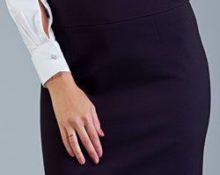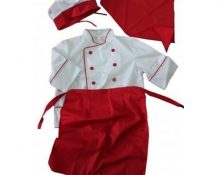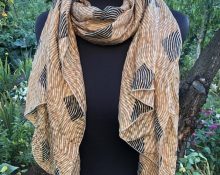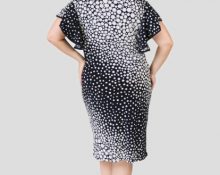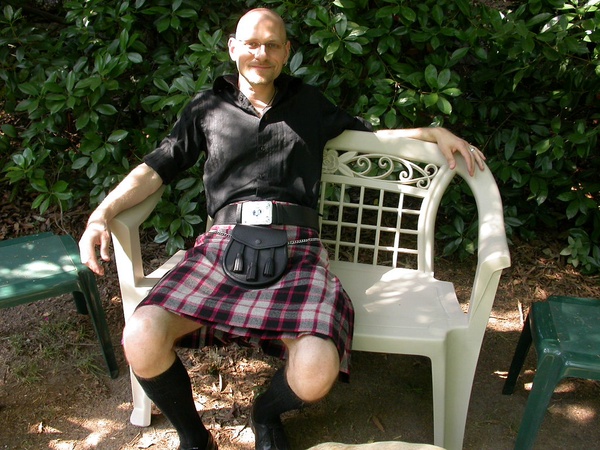
creativecommons.org
Kilt is one of the most unusual men's national European costumes. Today, as fashion trends move further away from gender stereotypes, this unusual skirt has every chance to break out of the streets of Scotland. However, a kilt pattern will be needed not only in case of the next fashion revolution: a Scottish skirt will become an unusual costume for an English play, a theme party or Halloween. In this material we will tell you how to sew a kilt yourself at home, and we will describe in detail step-by-step instructions for beginning craftswomen. Traditionally, at the end of the article you will find a pattern for the product.
History of the kilt
The history of the kilt dates back to the 7th century AD. Despite the fact that many associate kilts primarily with the Scots, the Vikings were the first to wear prototypes of “men’s” skirts. By the way, the word “kilt” itself comes from the Old Norse word “kjilt”, one of the translations of which is “folded”. A The first image of a man in a kilt was actually found in Scotland, in the small town of Nigg, where a stone with a carved design was found. Much later, the first written mention of this unusual Scottish outfit is found - the church minister Leslie mentioned in a letter to Rome that Scottish highlanders wear practical “capes” that are “very well suited for war.” He also mentioned that sometimes the Scots draped it elaborately and sometimes the piece of cloth hung freely. Much more curious is that when the kilt is first mentioned, it is called the strange word “cape”. The fact is that we are not talking about the short kilt that is familiar to us, but about the so-called “great kilt”, or “big kilt”, which was a large piece of fabric (sometimes the cut reached 10 meters in length), who exchanged over the shoulder and securedlied around the waist with a special leather belt.
Historically, kilts were initially worn only by residents of the Highlands, mainly the Highlanders of Scotland. The kilt was very comfortable to wear in the rainy Scottish climate: it did not hinder the movement of the often warring highlanders, protected from the cold, dried quickly and could serve as a blanket at night. The kilt also served as an alternative to a camping tent, croupnoh rope and even a fishing net. There are legends that during battles the most desperate Scottish warriors could throw off their kilts so that they did not hinder their movements at all, and literally fight the enemy without pants. But everything didn’t look as piquant as it seems, the fact is that the kilt itself was worn over a fairly long woolen shirt, under which another linen shirt was sometimes tucked under.
The design on the kilts, called “tartan,” also had meaning. The ornament and color showed which clan the highlander belonged to and acted as identification marks. Because of this political coloring of the kilt, there was a period in the history of the kilt when it was prohibited from being worn. After an unsuccessful battle with the British in 1745, the Scots lost their independence and were forced to abandon weapons and military paraphernalia, including the tradition of wearing kilts and even the simple use of tartan. So the kilt became nothing less than a symbol of Scottish independence. If there were those who violated the ban, they were forced to spend six months in prison. If after this the offender did not refuse the ammunition, he was deported to one of the English colonies. Despite the severe punishment, there were many Scottish aristocrats who wore a tartan kilt. Officially, this ban lasted 36 years and almost immediately the Scots began to ignore it en masse.
The tradition of wearing a kilt today
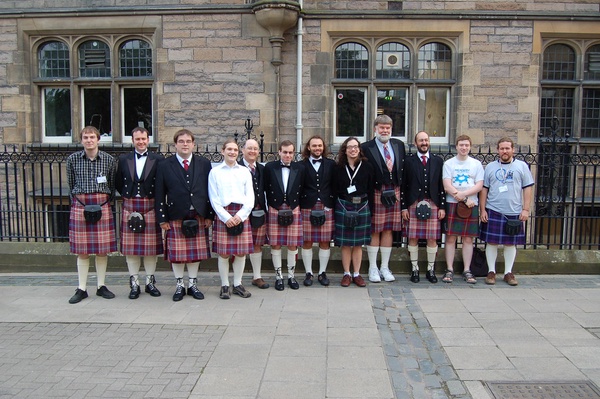
creativecommons.org
Very ironic, but a modern version of the shortened kilt, whichth Most people know it as the only version of this clothing, invented in the 18th century by the main enemy of the Scots - the Englishman. Industrialist Thomas Rawlinson owned smelting furnaces and collaborated with Ian MacDonell, head of the Scottish clan. Thanks to the latter, in turn, it was mainly the mountaineers who did the hard work at the stoves. It was difficult and uncomfortable for the Scots to work with hot metal in voluminous kilts, but their national pride did not allow them to take them off and replace them with more comfortable clothes.The religious Thomas Rawlinson took this situation as a challenge and proposed an elegant solution: he cut off the bottom of the kilt, draped it and secured all the folds. The Scots liked the new thing so much that they brought it from the workshop to their home, where they also appreciated the convenience of the new cut. Gradually, the new small kilt began to displace its traditional version. First, the highlanders began to wear it, and then the Scots living on the plains picked up the fashion trend. In addition to the Scots, small kilts are predominantly worn by the Irish, Welsh and residents of the Isle of Man. One of the popularizers of the kilt was the flamboyant Scottish designer Edward Duncan, who quite seriously suggested that men “leave the trousers to the women.”
What you need to sew a small kilt with your own hands
- Large piece of tartan fabric. For large men you need to take, according to Scottish tailors, nine yards of fabric, which is just over eight meters of fabric.
- Iron to secure folds.
- Sewing supplies (needles, threads, scissors, chalk for marking etc.).
- A pattern built according to the parameters of the model.
- Sewing machine (optional).
Step-by-step master class on sewing a kilt
From a pattern point of view, The modern kilt is a draped, wraparound skirt. The length of a traditional kilt should reach the middle of the neckn. The front part of the kilt is secured with an overlap, and the back part is draped with folds. The pattern is quite simple and should not raise any questions even for beginners. It is important not to skimp on fabric, then the product will look as authentic as possible.
Adjust the pattern to the model's parameters.
- Pin the fabric to the pattern. Make sure that all the cells in the pattern of the pattern are neatly adjusted. Don't be intimidated by the size, pleating will reduce the fabric cut to the desired size.
- Start working on the drapery. This is the most important stage of tailoring; the appearance of the product largely depends on its quality. Most often, pleating is done along the cage. However, if there is an idea to show off a military kilt, then you can resort to traditional striped drapery, as is customary in the Scottish army.
- Drape the fabric and secure it with pins. Do not hurry. Try it several times: fold one fold, then measure its width and calculate how many folds there will be.
- Hem the draped fabric at the top and bottom edges.
- Iron all folds.
- Simply machine stitch or sew the bottom and top pleating lines with a special seam.
- Work off the remaining edges of the kilt.


 0
0